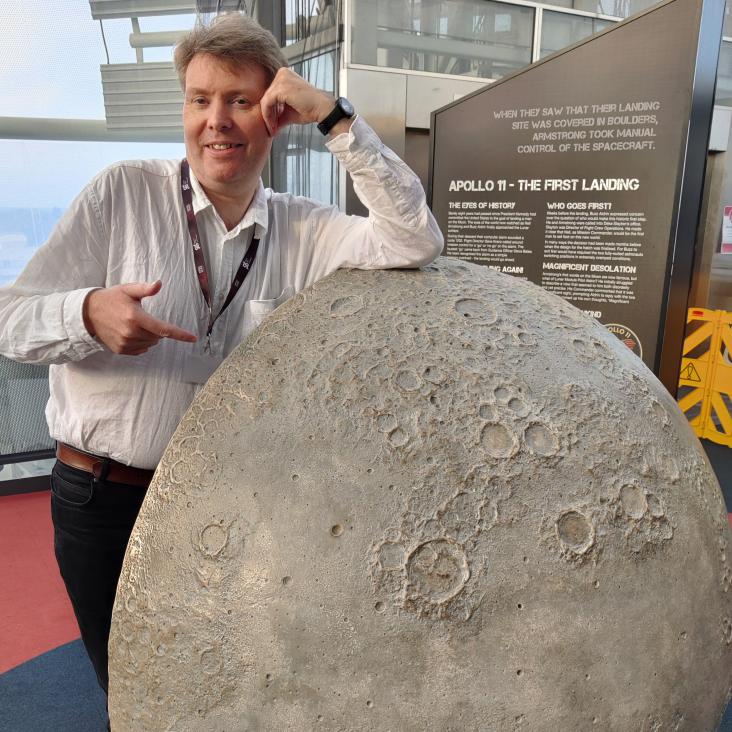EnVision: Taking the pulse of our twin planet
Experimental Astronomy 33:2-3 (2012) 337-363
Abstract:
EnVision is an ambitious but low-risk response to ESA's call for a medium-size mission opportunity for a launch in 2022. Venus is the planet most similar to Earth in mass, bulk properties and orbital distance, but has evolved to become extremely hostile to life. EnVision's 5-year mission objectives are to determine the nature of and rate of change caused by geological and atmospheric processes, to distinguish between competing theories about its evolution and to help predict the habitability of extrasolar planets. Three instrument suites will address specific surface, atmosphere and ionosphere science goals. The Surface Science Suite consists of a 2.2 m2 radar antenna with Interferometer, Radiometer and Altimeter operating modes, supported by a complementary IR surface emissivity mapper and an advanced accelerometer for orbit control and gravity mapping. This suite will determine topographic changes caused by volcanic, tectonic and atmospheric processes at rates as low as 1 mm a-1. The Atmosphere Science Suite consists of a Doppler LIDAR for cloud top altitude, wind speed and mesospheric structure mapping, complemented by IR and UV spectrometers and a spectrophotopolarimeter, all designed to map the dynamic features and compositions of the clouds and middle atmosphere to identify the effects of volcanic and solar processes. The Ionosphere Science Suite uses a double Langmiur probe and vector magnetometer to understand the behaviour and long-term evolution of the ionosphere and induced magnetosphere. The suite also includes an interplanetary particle analyser to determine the delivery rate of water and other components to the atmosphere. © 2011 Springer Science+Business Media B.V.Laboratory emissivity measurements of the plagioclase solid solution series under varying environmental conditions
Journal of Geophysical Research: Planets 117:11 (2012)
Abstract:
New laboratory thermal infrared emissivity measurements of the plagioclase solid solution series over the 1700∼400cm-1 (6-25m) spectral range are presented. Thermal infrared (TIR) spectral changes for fine-particulate samples (0-25m) are characterized for the first time under different laboratory environmental conditions: ambient (terrestrial-like), half-vacuum (Mars-like), vacuum, and vacuum with cooled chamber (lunar-like). Under all environmental conditions the Christiansen Feature (CF) is observed to vary in a systematic way with Na-rich end-member (albite) having a CF position at the highest wave number (shortest wavelength) and the Ca-rich end-member (anorthite) having a CF position with the lowest wave number (longest wavelength). As pressure decreases to<10-3mbar four observations are made: (1) the CF position shifts to higher wave numbers, (2) the spectral contrast of the CF increases relative to the RB, (3) the spectral contrast of the RB in the ∼1200-900 spectral range decreases while the spectral contrast of the RB in the ∼800-400 spectral range either increases or remains the same and (4) the TF disappears. A relationship between the wavelength position of the CF measured under simulated lunar conditions and plagioclase composition (An#) is developed. Although its exact form may evolve with additional data, this linear relationship should be applied to current and future TIR data sets of the Moon. Our new spectral measurements demonstrate how sensitive thermal infrared emissivity spectra of plagioclase feldspars are to the environmental conditions under which they are measured and provide important constraints for interpreting current and future thermal infrared data sets. © 2012 American Geophysical Union. All Rights Reserved.Thermal infrared emissivity measurements under a simulated lunar environment: Application to the Diviner Lunar Radiometer Experiment
Journal of Geophysical Research: Planets 117:1 (2012)
Abstract:
We present new laboratory thermal infrared emissivity spectra of the major silicate minerals identified on the Moon measured under lunar environmental conditions and evaluate their application to lunar remote sensing data sets. Thermal infrared spectral changes between ambient and lunar environmental conditions are characterized for the first time over the 400∼1700 cm -1 (6-25 m) spectral range for a fine-particulate mineral suite including plagioclase (albite and anorthite), pyroxene (enstatite and augite), and olivine (forsterite). The lunar environment introduces observable effects in thermal infrared emissivity spectra of fine particulate minerals, which include: (1) a shift in the Christiansen feature (CF) position to higher wave numbers (shorter wavelengths), (2) an increase in the overall spectral contrast, and (3) decreases in the spectral contrast of the reststrahlen bands and transparency features. Our new measurements demonstrate the high sensitivity of thermal infrared emissivity spectra to environmental conditions under which they are measured and provide important constraints for interpreting new thermal infrared data sets of the Moon, including the Diviner Lunar Radiometer Experiment onboard NASA's Lunar Reconnaissance Orbiter. Full resolution laboratory mineral spectra convolved to Diviner's three spectral channels show that spectral shape, CF position and band ratios can be used to distinguish between individual mineral groups and lunar lithologies. The integration of the thermal infrared CF position with near infrared spectral parameters allows for robust mineralogical identifications and provides a framework for future integrations of data sets across two different wavelength regimes. Copyright 2012 by the American Geophysical Union.Investigation of new band parameters with temperature dependence for self-broadened methane gas in the range 9000 to 14,000 cm -1 (0.71 to 1.1 μm)
Journal of Quantitative Spectroscopy and Radiative Transfer (2012)
Lunar regolith thermal gradients and emission spectra: Modeling and validation
Journal of Geophysical Research American Geophysical Union (AGU) 116:E12 (2011) E12003


